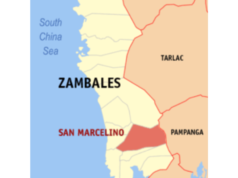Patricia Neal suffered a series of near-fatal strokes in 1965. Though pregnant at the time of the first stroke, she bore a normal child. She resumed her acting career in 1968 and received an Academy Award nomination for Best Actress for her electrifying performance in The Subject Was Roses. Quite a feat!
American president Dwight David Eisenhower made a quick and complete recovery from stroke in 1955.
The following year, he was reelected a second presidential term. In retirement, he remained active in politics and wrote three books. An avid golfer, he scored his only hole in one in 1968, 13 years after his stroke and a year before his death.
And who can forget George Frederick Handel, a German-British composer suffered a stroke in 1737, at age 52? Five years later, he composed The Messiah and continued to compose until his death in 1759.
They’re few of the lucky beings who survived heart attack. In the Philippines, stroke is one of the top five causes of death. Although it is very common, most Filipinos who experience an impending stroke don’t recognize the symptoms of in denial that he has a “brain attack.”
“A stroke event must be dealt with just like a heart attack,” declares Dr. Alejandro F. Diaz, an associate professor of neurology at the University of Santo Tomas.
“The phrase ‘brain attack’ was coined to mean that stroke is always an emergency. A ‘wait and see’ attitude has no room in the management of this serious disease. Even when stroke symptoms are perceived as mild, the condition should still get immediate medical attention.”
There are two main types of stroke: ischemic and hemorrhagic. In ischemic, about 80 percent of strokes are caused by atherosclerosis (buildup of cholesterol-containing fatty deposits called plaque).
Growth of plaque roughens the inside of the artery. The irregular surface can cause turbulent blood flow around the buildup – like a boulder in a rushing stream – and trigger development of a clot.
More than half of ischemic strokes are caused by stationary (thrombotic) blood clots that develop in the arteries leading from the heart to the brain – typically the carotid arteries in the neck.
A less frequent form of ischemic stroke occurs when a tiny piece of clotted blood breaks loose from the artery wall and is swept through larger arteries into smaller vessels of the brain. A clot that may have developed in a chamber in the heart can also break loose.
If the moving (embolic) clot lodges in a small artery and blocks blood flow to a portion of the brain, a stroke occurs. “An ischemic stroke usually affects the cerebrum, the portion of your brain that controls your movement, language and senses,” says the Mayo Foundation.
The hemorrhagic type of stroke occurs when a blood vessel in the brain leaks or ruptures. Blood from the hemorrhage spills into the surrounding brain tissue causing damage. Brain cells beyond the leak or rupture are deprived of blood and are also damaged.
One cause of hemorrhagic stroke is an aneurysm. This “ballooning” from a weak spot in a blood vessel wall develops with age. Some aneurysms may also form as a result of a genetic predisposition.
As an aneurysm forms, the vessel wall becomes thin and stretched. An aneurysm that grows to at least three-eighths of an inch in diameter (about the size of the head of a thumbtack) is most likely to rupture.
The most common cause of hemorrhagic stroke is high blood pressure (hypertension).
The constant force exerted by uncontrolled high blood pressure can weaken blood vessel walls. Eventually, the small blood vessels in the brain can hemorrhage. Hypertension increases the risk of a hemorrhagic stroke whether or not a person has an aneurysm.
“Hemorrhagic strokes are less common than ischemic strokes — but more often deadly,” warns the Mayo Foundation. “About 50 percent of people who have hemorrhagic strokes die compared to about 20 percent for ischemic strokes. Strokes that occur in young adults are typically hemorrhagic.”
Seventy percent of stroke cases in the Philippines are ischemic in nature.
In most instances, strokes are prevented by means of drugs. For instance, people treated with the drug minocycline within six to 24 hours after a stroke had significantly fewer disabilities, according to a study published in Neurology, the medical journal of the American Academy of Neurology.
However, there are some ways which can help you prevent stroke from happening. Recent studies show that cigarette smoke is an important risk factor for stroke.
Quitting smoking reduces the risk of stroke, even in long-time smokers. Studies have shown that within years after men and women stop smoking, their stroke risk declines to the level of nonsmokers.
An increase in the red blood cell count is a risk factor for stroke. The reason is that increased red blood cells thicken the blood and make clots more likely. This problem is treatable by removing blood or administering “blood thinners.” A complete blood count is a simple test that can detect this problem.
Anyone with any type of heart disease should see a doctor regularly. Good management of heart disease reduces the risk of stroke.
Health experts claim that if hypertension is controlled, the risk of stroke is greatly reduced. This is the reason why everyone’s blood pressure should be checked annually.
Oftentimes, simply eating a healthier diet and maintaining proper weight can control hypertension. Drugs to control blood pressure are also available.
Only about 10 percent of strokes are preceded by mini-strokes. Nevertheless, TIAs are extremely important; they’re strong predictors of stroke. Antithrombotics such as aspirin, which interfere with blood clotting, are the standard therapy.
Meanwhile, there are risk factors that cannot be controlled; among them: age (older people have a much greater stroke risk than their younger counterparts), being male, diabetes (although this disease is treatable, having it makes a person much more likely to suffer a stroke), heredity (risk is greater for people who have a family history of stroke), and prior stroke (the risk of stroke for someone who’s already had one is many times that of someone who has not).




